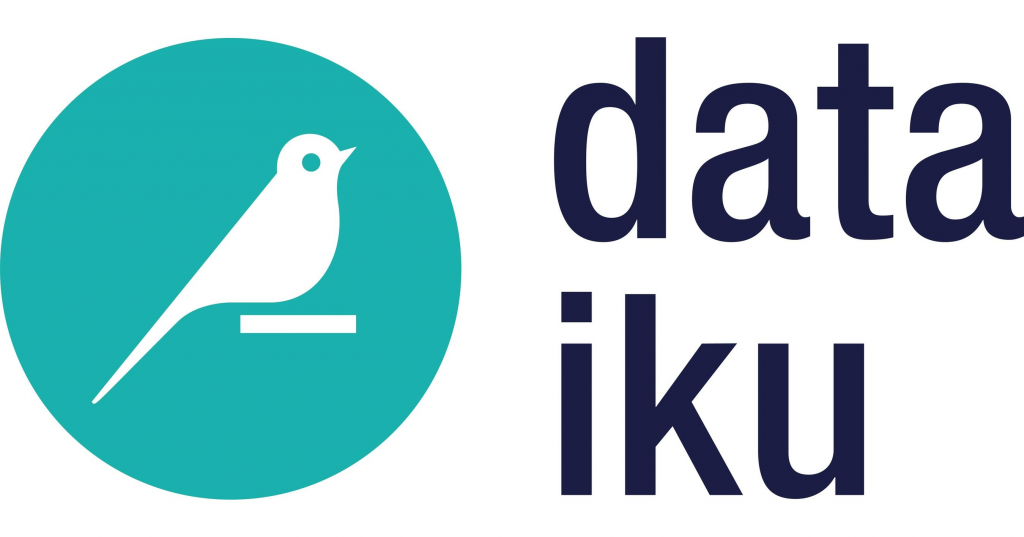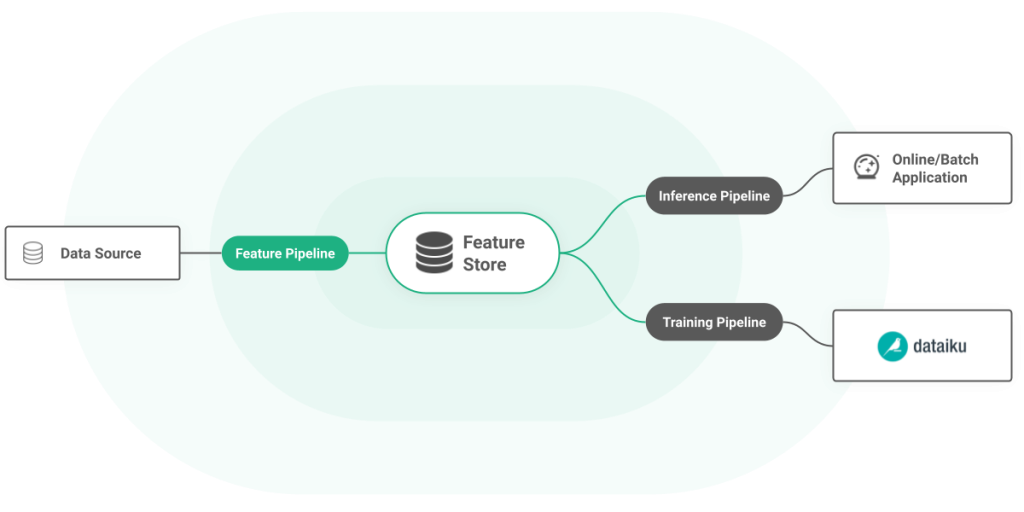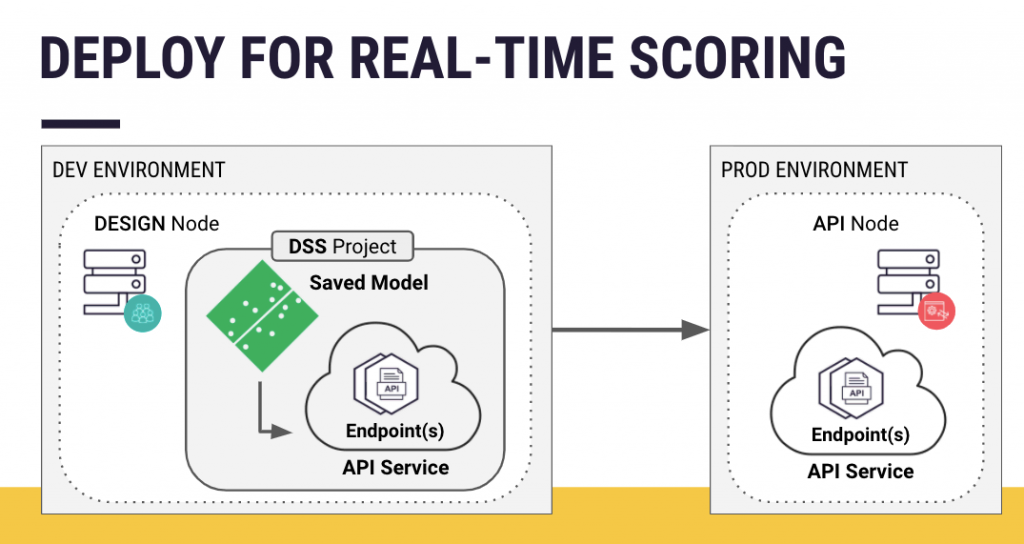What is Dataiku?

Dataiku is a platform for advanced analytics and collaborative data science that empowers organizations to build, deploy, and manage end-to-end data pipelines and machine learning models. It provides a user-friendly interface that enables data professionals, including data scientists, analysts, and engineers, to work together in a collaborative environment to solve complex data challenges. Dataiku supports a wide range of tasks, from data preparation and exploration to modeling and deployment.
Top 10 use cases of Dataiku?
Here are the top 10 use cases of Dataiku:
- Data Preparation and Cleaning: Dataiku helps users clean, transform, and prepare raw data from various sources for analysis. It provides tools for data wrangling, data enrichment, and feature engineering.
- Exploratory Data Analysis (EDA): Users can visually explore data to understand patterns, relationships, and insights. Dataiku’s interactive visualization capabilities aid in understanding the data’s characteristics.
- Machine Learning Model Development: Dataiku facilitates the creation of machine learning models using a variety of algorithms. It offers features for model training, hyperparameter tuning, and model evaluation.
- Feature Engineering: Dataiku supports the creation of new features from existing data to enhance model performance. This includes techniques like scaling, encoding categorical variables, and generating derived features.
- Model Deployment: Once models are trained, Dataiku allows users to deploy them into production environments. This includes integrating models with business applications and systems.
- Collaborative Data Science: Dataiku enables teams to collaborate on data projects, share insights, and work together on analysis and modeling tasks. This promotes cross-functional teamwork and knowledge sharing.
- Automated Machine Learning (AutoML): Dataiku includes AutoML capabilities that automate the process of feature selection, model training, and hyperparameter tuning, making it easier to build effective models.
- Time Series Analysis: For datasets with temporal components, Dataiku supports time series analysis, forecasting, and anomaly detection, crucial for applications like demand prediction and fraud detection.
- Customer Segmentation and Personalization: Dataiku can be used to segment customers based on behavior, demographics, or other variables, allowing businesses to tailor marketing efforts and customer experiences.
- Predictive Maintenance: In industrial contexts, Dataiku can help predict when machinery and equipment might fail, enabling proactive maintenance to reduce downtime and costs.
It’s important to note that while Dataiku offers these use cases, its versatility allows it to address a wide array of data-related challenges across various industries. Organizations can adapt the platform to their specific needs, making it a powerful tool for enhancing data-driven decision-making and innovation.
What are the feature of Dataiku?

Dataiku offers a comprehensive set of features to support various aspects of data science, analytics, and collaboration. Here are some key features of Dataiku:
- Data Preparation: Dataiku provides tools for data cleaning, transformation, and enrichment. Users can clean messy data, handle missing values, and perform various data manipulations.
- Visual Data Exploration: The platform offers interactive visualizations to help users explore and understand their data. This includes charts, graphs, and dashboards for effective data analysis.
- Machine Learning: Dataiku supports a wide range of machine learning algorithms and techniques. It includes AutoML capabilities for automating model selection and hyperparameter tuning.
- Model Evaluation and Deployment: Users can assess the performance of machine learning models using various metrics. Dataiku facilitates model deployment and integration with business applications.
- Collaboration: Dataiku enables teams to collaborate on data projects. Users can share code, analyses, and visualizations, promoting knowledge sharing and teamwork.
- Data Pipelines: The platform allows users to create end-to-end data pipelines that automate data processing tasks. This includes data extraction, transformation, loading, and scheduling.
- Notebooks: Dataiku supports Jupyter notebooks for coding and analysis. This allows data scientists to write code in their preferred programming language and integrate it with the platform.
- Version Control: Dataiku integrates with version control systems like Git, enabling users to track changes, collaborate, and manage different versions of their projects.
- Data Governance: The platform offers features for managing and tracking data lineage, ensuring data quality, and adhering to compliance requirements.
- Scalability: Dataiku can handle large datasets and complex analyses, making it suitable for enterprises with demanding data science needs.
How Dataiku works and Architecture?

Now, let’s discuss how Dataiku works and its architecture:
Architecture:
Dataiku follows a modular architecture that can be broken down into the following components:
- User Interface: Dataiku provides a web-based user interface that enables users to interact with the platform, perform data analysis, build models, and collaborate.
- Backend Services: This layer consists of services responsible for handling user requests, managing data connections, orchestrating workflows, and executing data preparation and analysis tasks.
- Data Storage: Dataiku supports various data storage solutions, including relational databases, data lakes, and cloud storage. It connects to these sources to ingest and store data.
- Execution Engines: For data processing and model training, Dataiku supports different execution engines, including Apache Spark, Hadoop, and Kubernetes. These engines ensure efficient computation and scalability.
- Model Management: This component manages the lifecycle of machine learning models, from development and testing to deployment and monitoring.
- Collaboration Hub: Dataiku provides collaboration features, including project sharing, version control, and commenting, allowing teams to work together seamlessly.
- Integration Layer: Dataiku can integrate with external systems and tools, such as databases, data visualization tools, and reporting platforms.
- Security and Governance: Dataiku incorporates security features to control access to data and projects. It also includes governance features to track data lineage, maintain data quality, and ensure compliance.
Overall, Dataiku’s architecture is designed to provide a unified environment for data professionals to collaborate, analyze data, build models, and deploy solutions, all while maintaining data security and quality.
How to Install Dataiku?
To install Dataiku, you can follow these steps:
- Download the Dataiku installer
The first step is to download the Dataiku installer. You can download the installer from the Dataiku website.
- Run the installer
Once you have downloaded the installer, run it. The whole installation process will be guided through the installer.
- Create a Dataiku account
During the installation process, you will need to create a Dataiku account. This account will be used to log in to Dataiku.
- Configure Dataiku
Once the installation is complete, you will need to configure Dataiku. This includes setting up your workspace and connecting to your data sources.
- Start using Dataiku
Once Dataiku is configured, you can start using it. Dataiku provides a variety of tools for data science, machine learning, and artificial intelligence.
Here are the detailed steps on how to install Dataiku on different operating systems:
Windows
- Download the Dataiku installer for Windows from the Dataiku website.
- Run the installer and execute the given instructions over the screen.
- Create a Dataiku account and log in to Dataiku.
- Configure Dataiku by setting up your workspace and connecting to your data sources.
- Start using Dataiku.
macOS
- Download the Dataiku installer for macOS from the Dataiku website.
- Run the installer and execute the given instructions over the screen.
- Create a Dataiku account and log in to Dataiku.
- Configure Dataiku by setting up your workspace and connecting to your data sources.
- Start using Dataiku.
Linux
- Download the Dataiku installer for Linux from the Dataiku website.
- Navigate to the directory where you downloaded the installer, after opening a terminal window.
- Run the following command to install Dataiku:
sudo ./dataiku-installer.sh- Create a Dataiku account and log in to Dataiku.
- Configure Dataiku by setting up your workspace and connecting to your data sources.
- Start using Dataiku.
Basic Tutorials of Dataiku: Getting Started

The following steps are the basic tutorials of Dataiku:
- Create a Dataiku project
The first step is to create a Dataiku project. A project is a container for your data, models, and code. You can create a project by clicking on the “Create Project” button in the Dataiku interface.
- Import data into your project
Once you have created a project, you need to import data into it. You can import data from a variety of sources, such as CSV files, databases, and cloud storage.
- Explore your data
Once you have imported data into your project, you can explore it. You can use Dataiku’s built-in data exploration tools to visualize your data, create summary statistics, and perform hypothesis tests.
- Build a machine learning model
Once you have explored your data, you can build a machine learning model. Dataiku provides a variety of machine learning algorithms that you can use, such as linear regression, logistic regression, and decision trees.
- Deploy your model
Once you have built a machine learning model, you can deploy it. Deployment means making the model available to users so that they can use it to make predictions. Dataiku provides a variety of ways to deploy models, such as as a REST API, a web application, or a mobile app.
- Monitor your model
Once you have deployed your model, you need to monitor it. This means tracking the performance of the model and identifying any issues. Dataiku provides a variety of tools for monitoring models, such as KPI dashboards and alerts.
- Improve your model
Over time, you may need to improve your model. This can be done by retraining the model on new data or by adjusting the model’s parameters. Dataiku provides a variety of tools for improving models, such as a model comparison tool and a model tuning tool.
- Why Can’t I Make Create A New Folder on External Drive on Mac – Solved - April 28, 2024
- Tips on How to Become a DevOps Engineer - April 28, 2024
- Computer Programming Education Requirements – What You Need to Know - April 28, 2024

